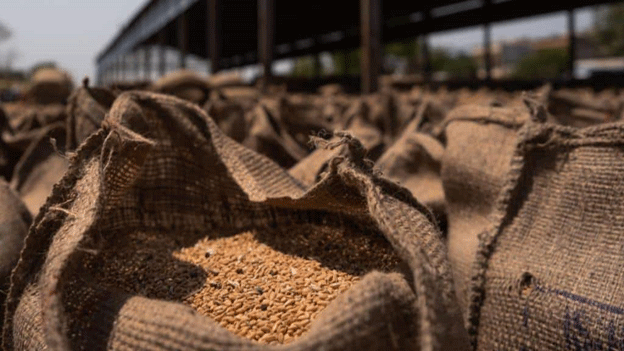Government to Begin Open Market Sale of Wheat & Rice
Overview of the Government’s Decision
Starting August 1, 2024, the Indian government will facilitate the open market sale of wheat and rice from its buffer stocks to bulk buyers. This move, priced at Rs 2325/quintal for wheat and Rs 2800/quintal for rice, seeks to balance domestic supply and preemptively manage price fluctuations in these essential cereals.
Key Insights and Data
Wheat Market Dynamics
The Food Corporation of India (FCI) currently holds approximately 28.04 million metric tons (MT) of wheat against a buffer requirement of 27.58 MT as of July 1, 2024. After fulfilling public distribution needs and other welfare schemes (approximately 18.4 MT), a surplus will be available for market interventions as needed.
- Inflation and Market Impact: Wheat inflation was 6.53% in May, significantly lower due to previous open market sales that began in August 2023, reducing inflation to single digits.
Rice Surplus and Market Challenges
Contrarily, rice stocks exceed buffer norms with over 47.49 MT against a buffer of 13.54 MT for July 1, 2024. Despite efforts to auction rice to bulk buyers weekly, responses have been lackluster, prompting upcoming measures to manage surplus stocks before the new procurement season in October.
Urad Market Dynamics
Retail inflation for urad was recorded at 14.06% in May, maintaining double-digit prices since November 2023. However, recent declines in wholesale prices by 3.12% and 1.08% in Indore and Delhi respectively reflect robust kharif sowing and imports, aligning with a declining trend in landed prices of imported urad.
- Agricultural Impact: Sowing of urad across key states including Madhya Pradesh, Andhra Pradesh, Uttar Pradesh, Rajasthan, Tamil Nadu, and Maharashtra has shown promising growth, surpassing previous year’s figures by significant margins.
The government’s decision to initiate open market sales of wheat and rice addresses immediate market needs while leveraging surplus stocks effectively. This proactive measure not only stabilizes prices but also ensures sufficient supply for consumers and industrial demand. For agricultural stakeholders, understanding these dynamics will be crucial in navigating market fluctuations and optimizing production strategies in the upcoming seasons.
Error




